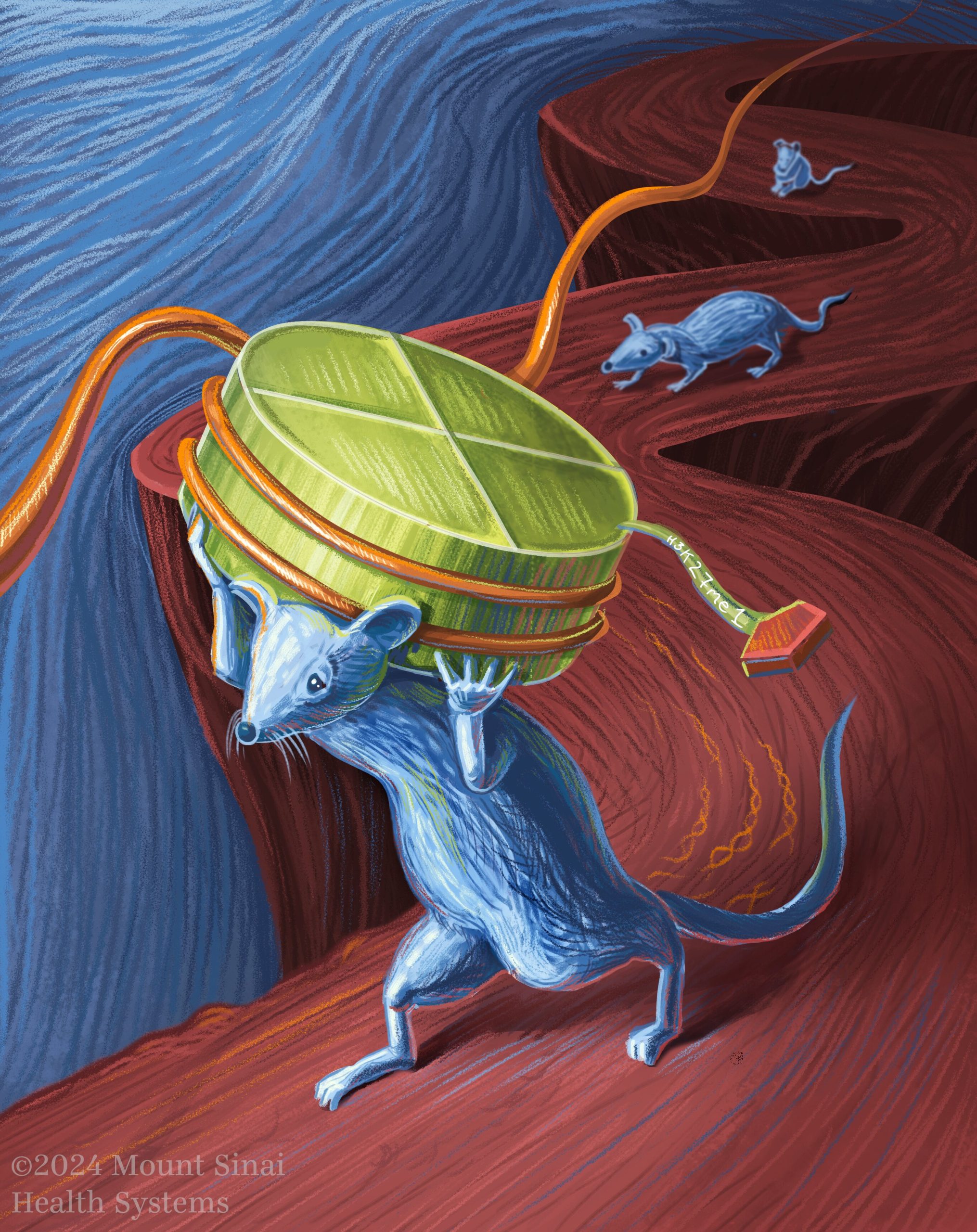
Chemical changes to histones, the proteins that help to pack and organize DNA inside cells, play a key role in determining what genes will be consistently activated over the course of an animal or human’s life. Past studies have shed light on some chemical alterations to histones occurring after these proteins have been translated in a cell that could increase people’s susceptibility to specific disorders or diseases.
Researchers at Icahn School of Medicine at Mount Sinai recently identified a particular histone post-translational modification that is linked to a greater susceptibility to different types of stress in mice. This modification, outlined in a paper published in Neuron, is the mono-methylation (the addition of a methyl group) of the 27th lysine amino acid in the histone H3 protein, also referred to as H3K27me1.
“We have known for decades that adverse experiences ‘scar’ our brains and influence how we respond to a variety of stressors,” Dr. Angelica Torres-Berrio, co-author of the paper, told Medical Xpress. “Those ‘scars,’ which serve as an analogy to refer to epigenetic factors, can persist for a lifetime and facilitate or prevent the expression of a specific set of genes.
“In this study, we sought to establish whether histone post-translational modifications, essential proteins that dictate DNA availability and gene readiness for expression, may serve as ‘epigenetic scars’ that mediate the negative impacts of stress.”
Dr. Torres-Berrio, Dr. Eric J. Nestler and their colleagues specifically focused their analyses on the nucleus accumbens (NAc) mice. This is a region in the mammalian brain known to contribute to mood regulation, motivation and cognitive control.
Past studies have found that some post-translational histone modifications in this region can increase the risk of developing some psychiatric disorders, including depression and anxiety. Torres-Berrio, Nestler and their colleagues set out to determine which modifications, among the hundreds identified in the past, specifically mediated a greater susceptibility to stress.
“We combined a variety of techniques that range from molecular assays to complex behavioral tasks,” explained Torres-Berrio. “First, we profiled hundreds of histone modifications from the NAc of mice exposed to chronic social defeat stress (ELS) or mice previously exposed to early life stress (ELS), using mass spectrometry. Through this unbiased proteomic approach, we identified H3K27me1 as the top candidate of stress susceptibility across these two mouse models. These changes were selectively observed in D1 neurons of the NAc.”
After profiling hundreds of histone modifications in the NAc of stress-exposed mice, the researchers used a technique known as CUT & RUN (cleavage under targets and release using nuclease) to uncover genes or segments of DNA that interacted with the H3K27me1 modification. This revealed that this particular modification binds to genes involved in the function of ion channels and synaptic receptors.

“We then explored the mechanism that might regulate H3K27me1 enrichment and focused on the polycomb repressive complex-2 (PRC2), a protein complex that regulates methylation at lysine 27 (K27) on histone 3,” said Torres-Berrio. “Thus, we measured EZH2, SUZ12, and EED protein and RNA expression in susceptible mice to CSDS. Among these, only SUZ12 was significantly different.”
Torres-Berrio, Nestler and their colleagues subsequently tried to confirm whether the protein SUZ12 contributed to regulating the H3K27me1 modification and thus played a part in conferring a greater stress susceptibility in mice. To do this, they expressed the functional domain (VEFS-domain) of this protein in D1 neurons in the NAc, a class of brain cells that play a key role in pleasure-seeking and reward-motivated behaviors.
“This experimental manipulation was sufficient not only to increase H3K27me1 abundance but also to change transcriptional and physiological signatures in the NAc,” said Torres-Berrio. “Remarkably, this manipulation made mice more vulnerable to the effects of stress. They displayed social avoidance and low motivation to interact with other mice or were unable to shift between learning strategies, which are signs of inflexible behavior.”
This recent study is the first to establish the crucial function of H3K27me1 in the mouse brain, particularly in the regulation of stress vulnerability. Moreover, the researchers unveiled specific genes in the Nac with a transcriptional potential affected by the aberrant enrichment of this histone modification.
“While histone posttranslational modifications are being recognized as important mediators of the prolonged effects of stress, researchers in the field have long focused on the repressive mark H3K27me3 or the enhancer-associated mark H3K27ac, leaving other histones modifications fully understudied,” said Torres-Berrio.
“Thanks to our unbiased histone profiling approach, we found H3K27me1 to be a common alteration across distinct mouse stress models. This finding is critical for our understanding of the complex neurobiology of stress as there is evidence that different models of stress may induce variable, even opposite, molecular changes in the brain, making it difficult to determine a unique mechanism.”
The recent work by Torres-Berrio, Nestler and their colleagues is a significant contribution to the study of stress and its underlying neurobiological processes. The histone post-translational modification identified by the team could soon become the focus of further research studies examining both animals and humans.
“Before our study, little to nothing was known about the function of H3K27me1 in the brain, either across development or in response to challenging environments,” added Torres-Berrio. “Thus, the next step is to explore how H3K27me1, and its regulatory mechanism, can contribute to the development of better treatments for depression and stress-related disorders.”
More information:
Angélica Torres-Berrío et al, Mono-methylation of lysine 27 at histone 3 confers lifelong susceptibility to stress, Neuron (2024). DOI: 10.1016/j.neuron.2024.06.006.
© 2024 Science X Network
Citation:
A histone post-translational modification linked to lifelong susceptibility to stress in mice (2024, October 6)
retrieved 6 October 2024
from https://medicalxpress.com/news/2024-10-histone-modification-linked-lifelong-susceptibility.html
This document is subject to copyright. Apart from any fair dealing for the purpose of private study or research, no
part may be reproduced without the written permission. The content is provided for information purposes only.




